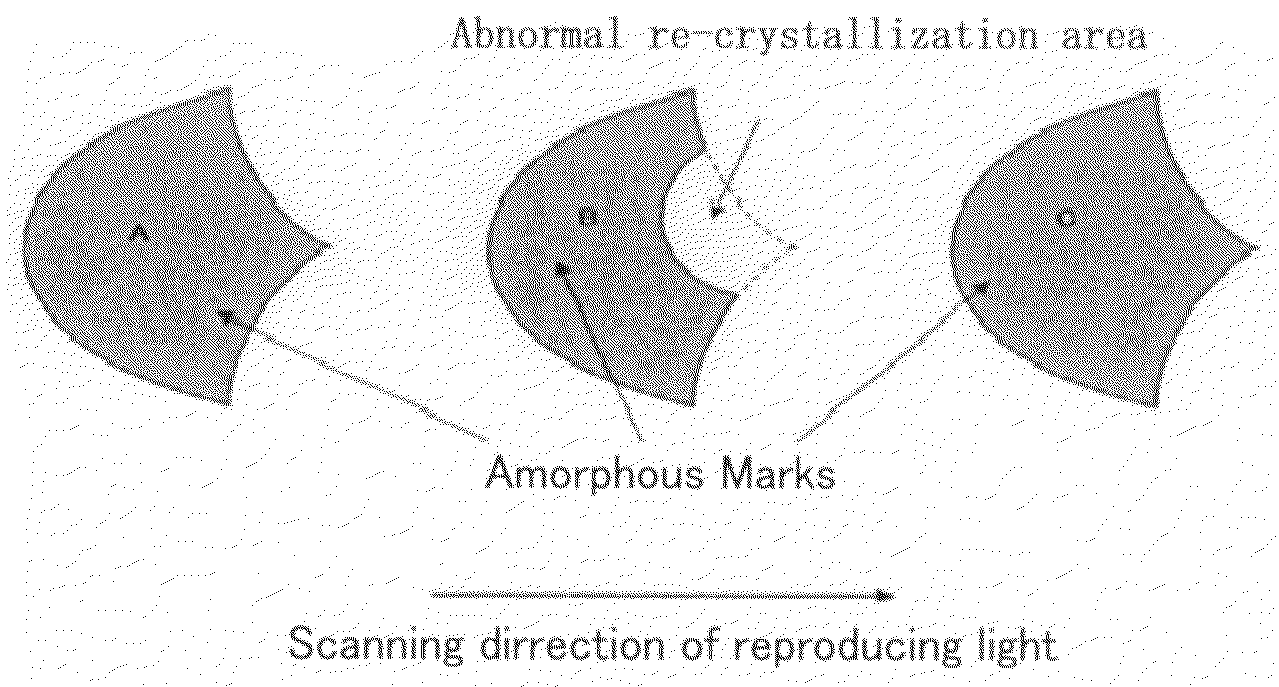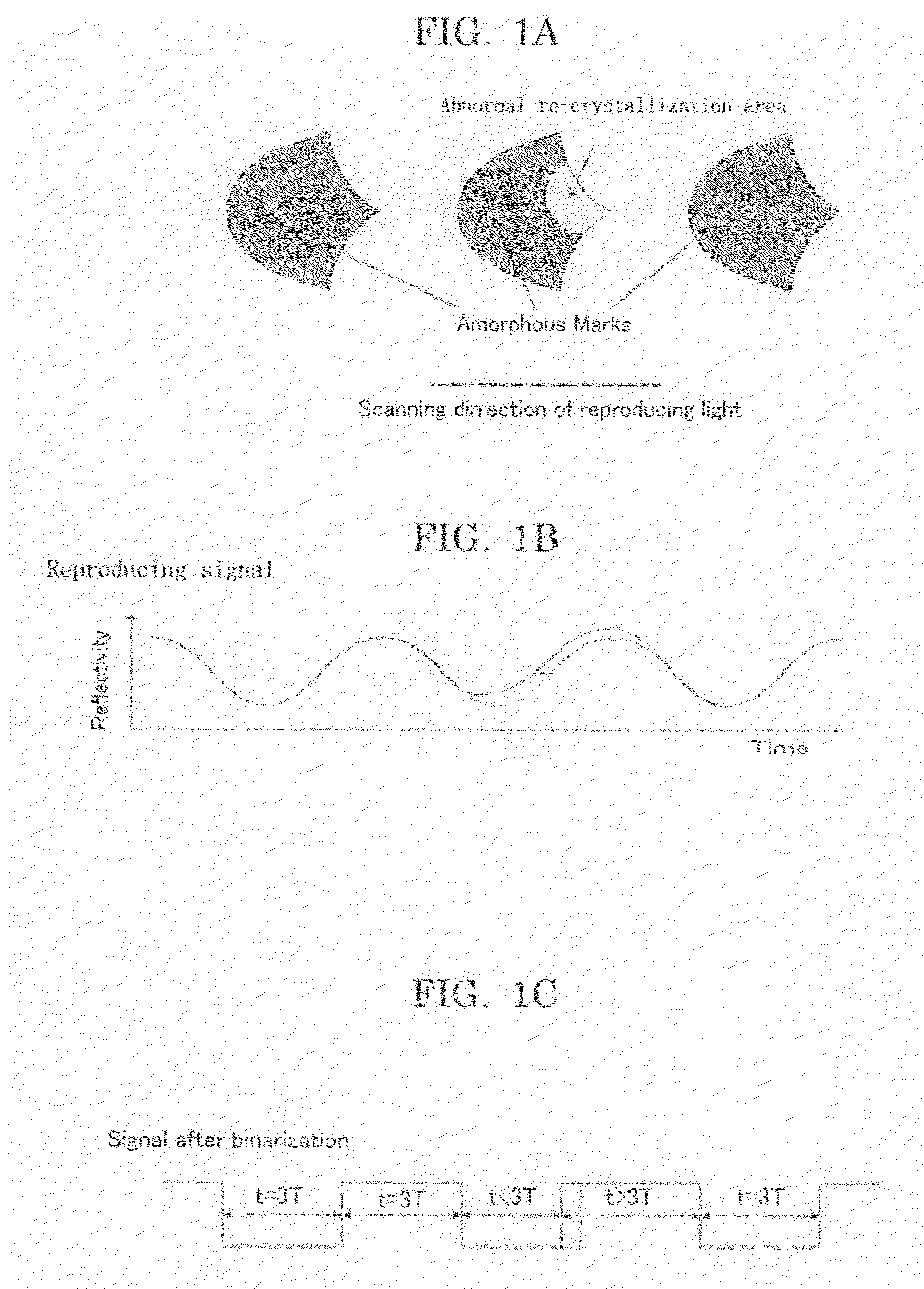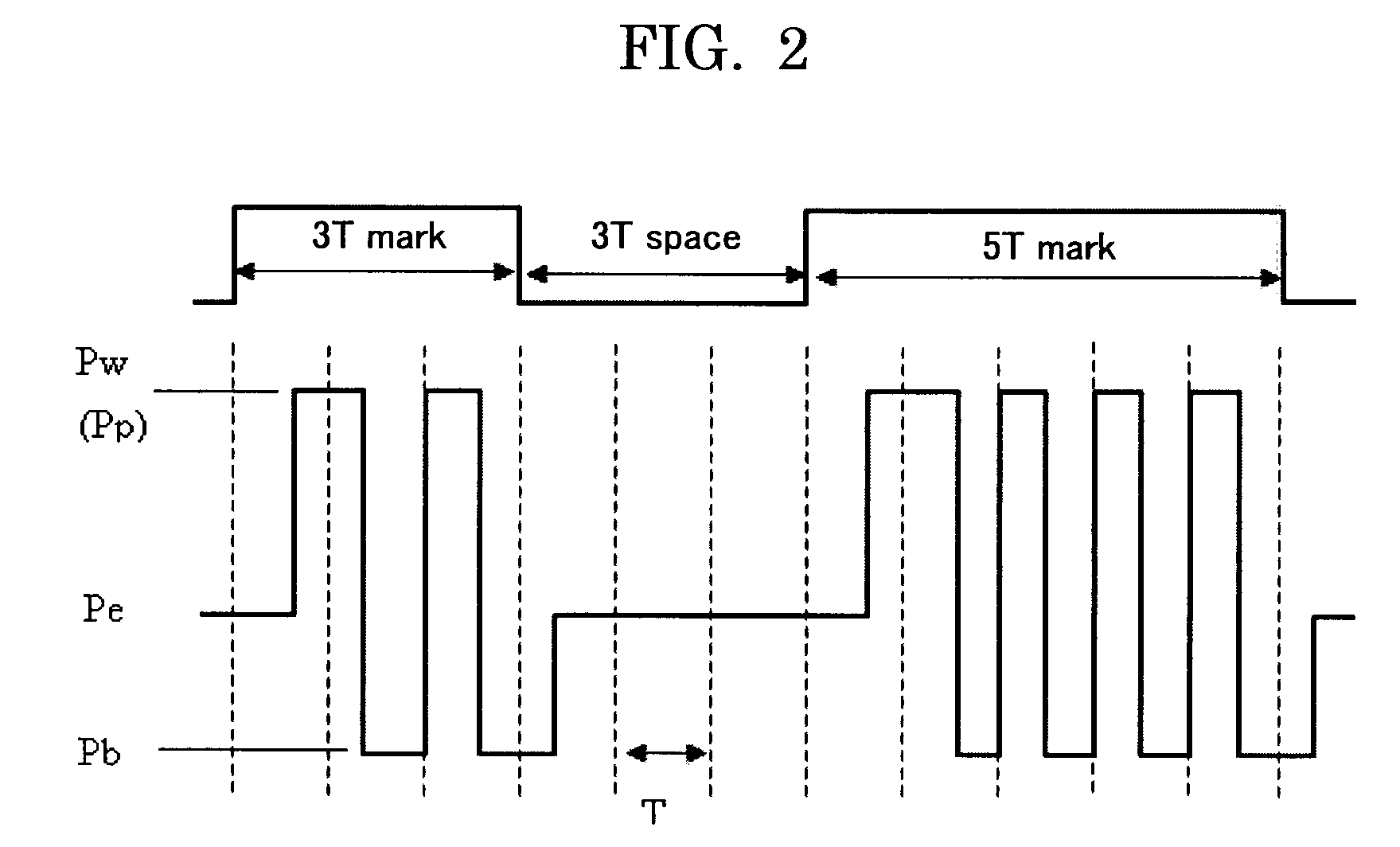Optical Recording Medium and Optical Recording Method
a recording medium and optical recording technology, applied in the field of high-density optical recording mediums, can solve problems such as distortion of reproducing signals, adverse effects, and errors in reproducing signals
- Summary
- Abstract
- Description
- Claims
- Application Information
AI Technical Summary
Benefits of technology
Problems solved by technology
Method used
Image
Examples
examples a-1 to a-9
AND COMPARATIVE EXAMPLES A-1 TO A-6
[0233]A disc substrate made of a polycarbonate resin having a diameter of 12 cm, a thickness of 0.6 mm and a groove with a track pitch of 0.74 μm was dehydrated at a high temperature. On the substrate, a first protective layer, a recording layer, a second protective layer, an anti-sulfuration layer and a reflective layer were sequentially deposited in this order, and a phase change optical recording medium was prepared.
[0234]More specifically, with a sputtering apparatus, DVD Sprinter manufactured by Unaxis, Ltd., a first protective layer having a thickness of 65 nm was deposited with a ZnS—SiO2 target having a molar ratio of 8 to 2 was deposited on the substrate. On the first protective layer, a recording layer having a thickness of 16 nm was deposited with an alloy target having a composition on an atom basis shown in Table 1 under sputtering conditions of argon gas pressure of 0.4 Pa (3×10−3 Torr) and RF power of 300 mW. On the recording layer, ...
example a-10
[0244]On the phase-change optical recording media prepared in Examples A-1 to A-4, high-speed recordings were performed at 12×-speed (about 42 m / s) with the 1T write strategy shown in FIG. 7A, and the width of the recording marks were monitored. Here, the pattern of the 1T write strategy and the reproducing conditions were equivalent to those in Example 1.
[0245]It was found that the modulation exceeded 0.45 when the write power was 30 mW or greater and that the width of a recording mark was about 75% of the 0.28-μm groove. The reflectivity was 0.25, and the R×M exceeded 0.11. The jitter was 10%.
[0246]From the conditions above, the write power was increased. When the write power was 36 mW, the jitter was 9.3%, reflectivity was 0.25 and R×M was 0.14. The width of a recording mark was about 90% of the groove width.
[0247]The write power was further increased. When the write power was 39 mW, the mark width was almost equivalent to or a little less than the groove width. The mark didn't s...
example a-11
[0248]Optical recording media were prepared in the same manner as Example 1 except that the thicknesses of the recording layers and the first protective layers were adjusted such that the reflectivity of the media were 18%, 22%, 24% and 30%, respectively. For each optical recording medium, a recording was performed at 6×-speed with the 2T write strategy, and the modulation was adjusted by varying the write power. Furthermore, the error rate in reproducing was evaluated. The results are shown in FIG. 18.
[0249]The results in FIG. 18 indicate that the modulation decreases with decreasing write power. The vertical dotted line in FIG. 18 indicates the modulation, i.e. 0.6, 0.5, 0.46 and 0.37, for the reflectivity of 18%, 22%, 24% and 30%, respectively, with which the value of R×M is 0.11.
[0250]The results in FIG. 18 also indicate that the error rates abruptly increased when the value of R×M was near 0.11. When the modulation was small, the error rate started increasing with the modulatio...
PUM
| Property | Measurement | Unit |
|---|---|---|
| wavelength | aaaaa | aaaaa |
| wavelength | aaaaa | aaaaa |
| transition linear velocity | aaaaa | aaaaa |
Abstract
Description
Claims
Application Information
 Login to View More
Login to View More - R&D
- Intellectual Property
- Life Sciences
- Materials
- Tech Scout
- Unparalleled Data Quality
- Higher Quality Content
- 60% Fewer Hallucinations
Browse by: Latest US Patents, China's latest patents, Technical Efficacy Thesaurus, Application Domain, Technology Topic, Popular Technical Reports.
© 2025 PatSnap. All rights reserved.Legal|Privacy policy|Modern Slavery Act Transparency Statement|Sitemap|About US| Contact US: help@patsnap.com



